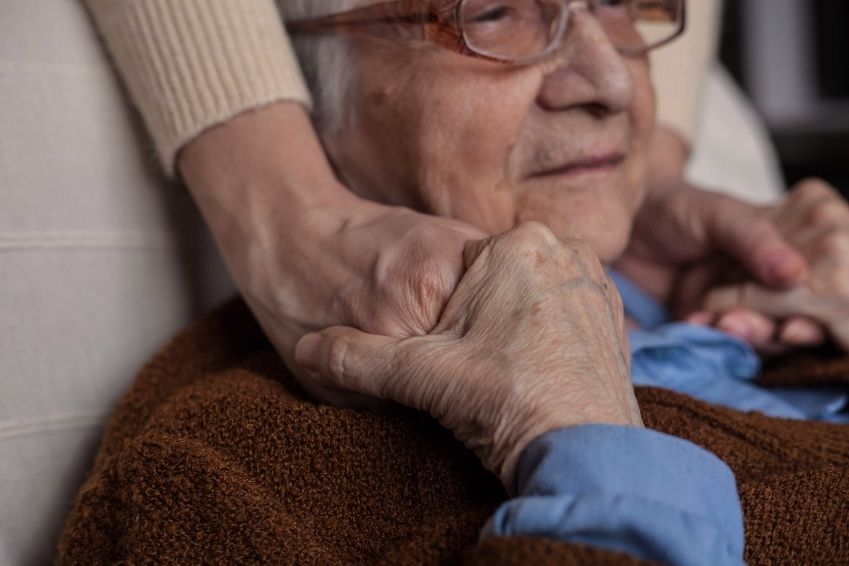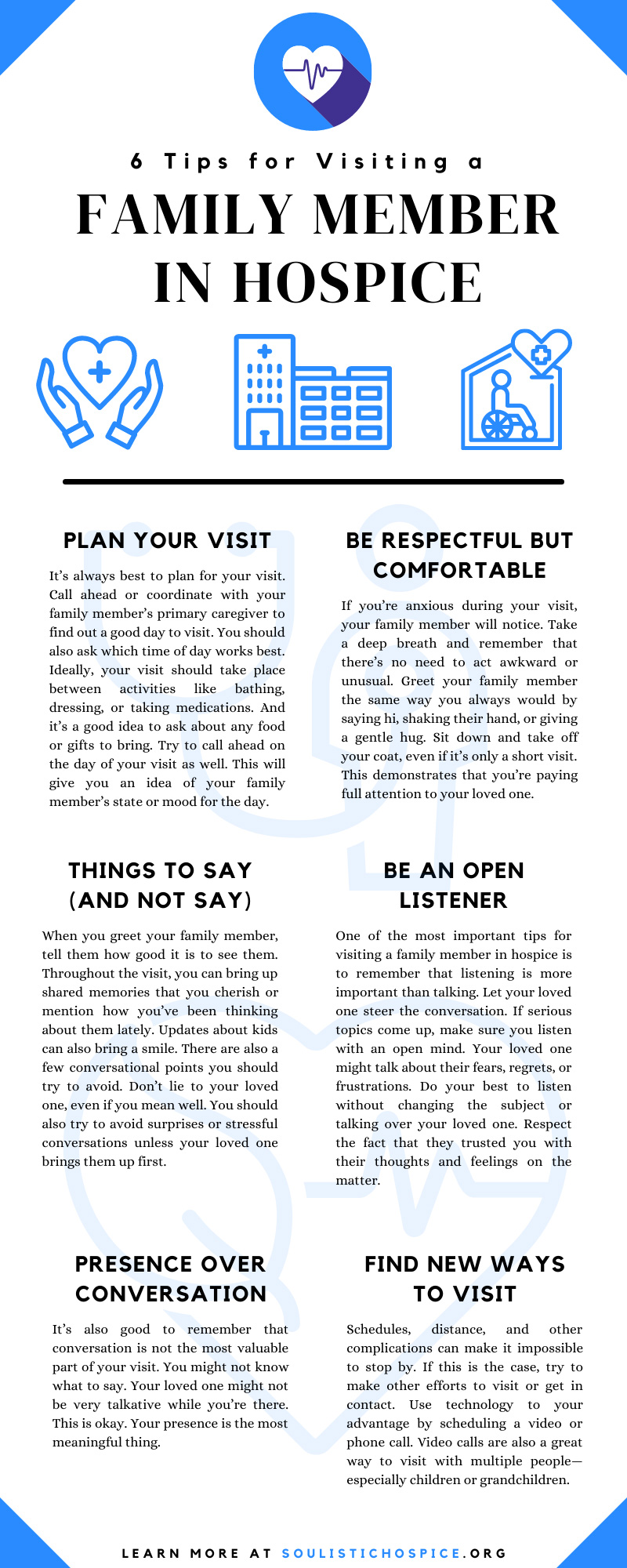
Visits from friends and family are invaluable at any stage of life, but especially during hospice care. Hospice patients can benefit greatly from seeing a loved one, even if all they do during their visit is sit in comfortable silence. Unfortunately, it isn’t always easy seeing a family member in hospice care. Awkwardness and anxiety can turn even a short visit into an incredibly stressful event that doesn’t benefit anyone, least of all the patient. If you have a loved one in hospice, it’s important to remember that your visits aren’t about you. Learn how to bypass the awkwardness and spend meaningful time with your loved one while you can. To help you make the most of every moment, here are six tips for visiting a family member in hospice.
Plan Your Visit
It’s always best to plan for your visit. Call ahead or coordinate with your family member’s primary caregiver to find out a good day to visit. You should also ask which time of day works best. Ideally, your visit should take place between activities like bathing, dressing, or taking medications. And it’s a good idea to ask about any food or gifts to bring. Try to call ahead on the day of your visit as well. This will give you an idea of your family member’s state or mood for the day. If your family member is experiencing extra pain or other symptoms on the day of the visit, being with other people might exhaust them or worsen their mood. Calling in advance helps you avoid bad visits and plan for a better time that will make everyone more comfortable.
Be Respectful but Comfortable
If you’re anxious during your visit, your family member will notice. Take a deep breath and remember that there’s no need to act awkward or unusual. Greet your family member the same way you always would by saying hi, shaking their hand, or giving a gentle hug. Sit down and take off your coat, even if it’s only a short visit. This demonstrates that you’re paying full attention to your loved one. The type of conversations and interactions you have will depend on your family member, but keep in mind that it’s okay to feel and act casual. You can smile and laugh when the situation calls for it. When you are comfortable in your loved one’s presence, you bring a reassuring sense of calm and normalcy to the room.
Things To Say (and Not Say)
Conversations with a hospice patient aren’t always easy. They’re also not always necessary. However, if you are looking for something to say, there are a few subjects you can bring up. When you greet your family member, tell them how good it is to see them. Throughout the visit, you can bring up shared memories that you cherish or mention how you’ve been thinking about them lately. Updates about kids can also bring a smile.
There are also a few conversational points you should try to avoid. Don’t lie to your loved one, even if you mean well. For example, saying that you will see them soon even though you have no plans to visit again can cause more harm in the long run. Instead, talk about how you will continue to think about your family member, or how glad you are that you visited. You should also try to avoid surprises or stressful conversations unless your loved one brings them up first. Bringing up negative memories or issues from the past can reopen old wounds, and your loved one might not have the energy to deal with that right now. Try to keep the conversation lighthearted unless they initiate more serious discussions.
Be an Open Listener
One of the most important tips for visiting a family member in hospice is to remember that listening is more important than talking. Let your loved one steer the conversation. If serious topics come up, make sure you listen with an open mind. Your loved one might talk about their fears, regrets, or frustrations. This can be hard to hear, especially when it involves personal matters. Do your best to listen without changing the subject or talking over your loved one. Respect the fact that they trusted you with their thoughts and feelings on the matter. You can ask questions or give gentle encouragement to show that you are listening intently to the topic at hand. At the end of the day, the most crucial thing is to give your loved one the space and support they need to have these conversations.
Presence Over Conversation
It’s also good to remember that conversation is not the most valuable part of your visit. You might not know what to say. Your loved one might not be very talkative while you’re there. This is okay. Your presence is the most meaningful thing. If a conversation isn’t going to happen, be a present companion instead. You can offer comfort through touch or simply by sitting with your loved one. Additionally, remember not to take it personally if the visit seems quiet or one-sided. Your loved one might be too tired to talk or show a lot of excitement. This isn’t your fault. Know that your presence is still meaningful, even when a visit feels more awkward than usual.
Find New Ways To Visit
Your presence matters. Even a single visit can mean a lot to your loved one. However, in-person visits aren’t always easy. Schedules, distance, and other complications can make it impossible to stop by. If this is the case, try to make other efforts to visit or get in contact. Use technology to your advantage by scheduling a video or phone call. Video calls are also a great way to visit with multiple people—especially children or grandchildren. You can also send letters to let your loved one know you’ve been thinking about them. Letters are an easy way to get in touch and send your regards. You can also send photos, drawings, or other mementos in a letter to create a meaningful gift.
In-home hospice care provides a patient with professional, compassionate care no matter where they live. This also makes it easier for loved ones to visit. If you or a family member are seeking holistic in-home hospice care in Tucson or its surrounding areas, contact Soulistic Hospice today to learn more about our available options and services.









